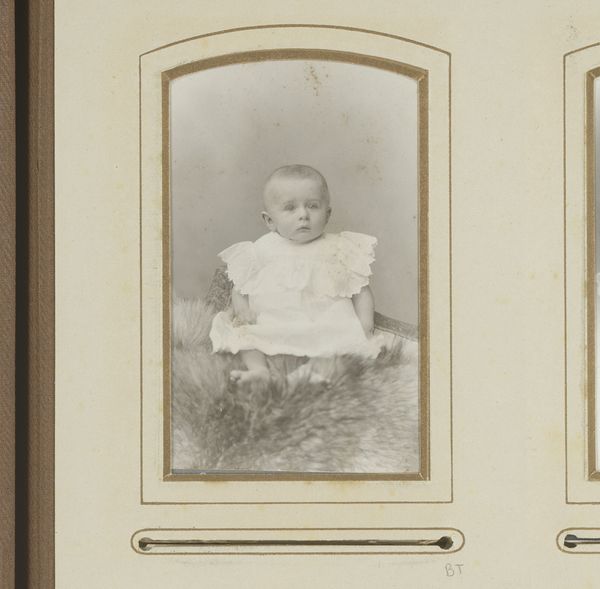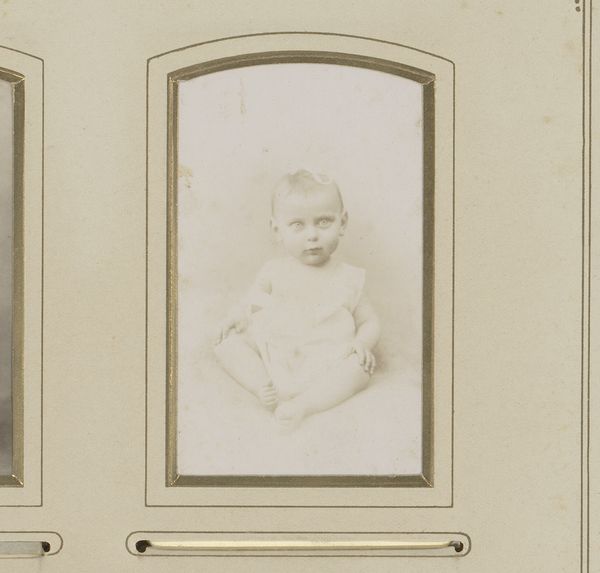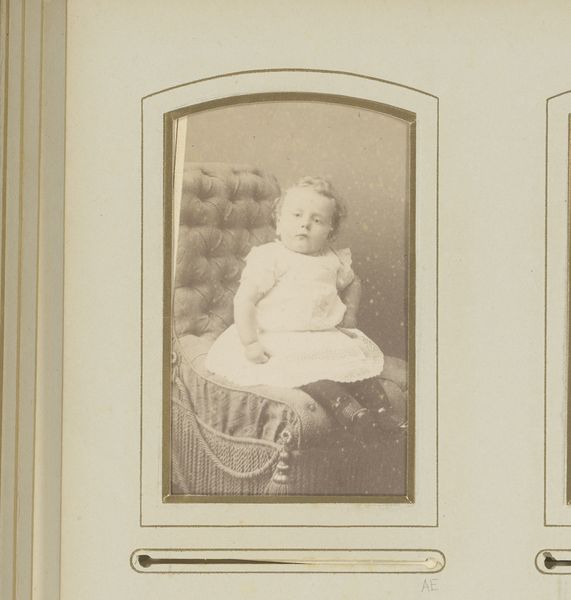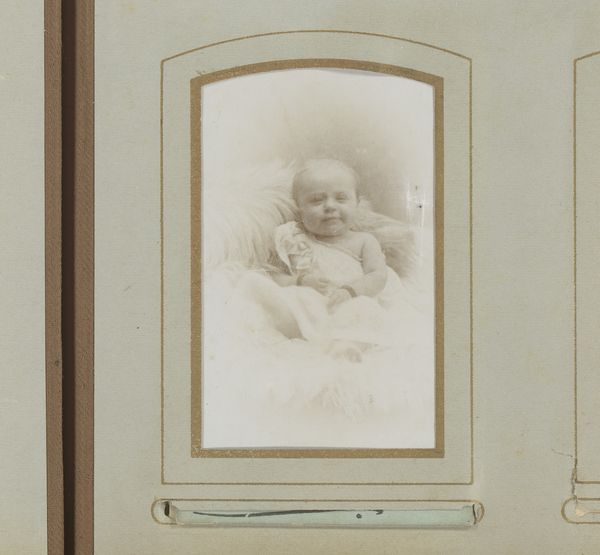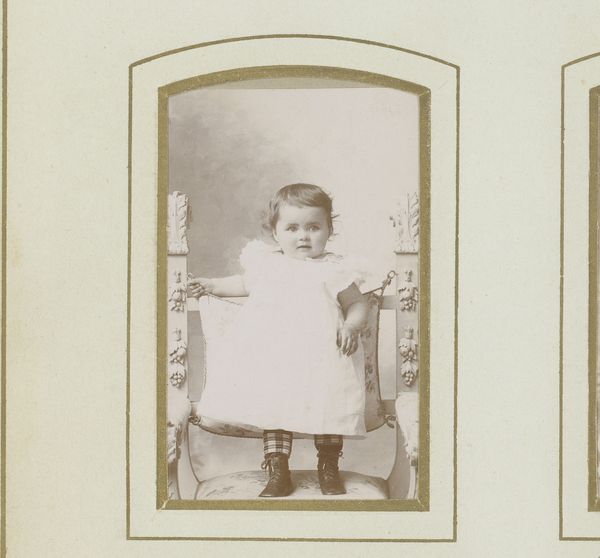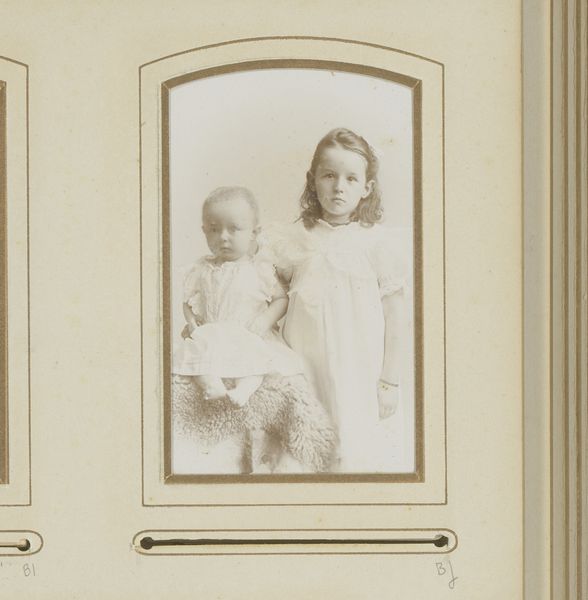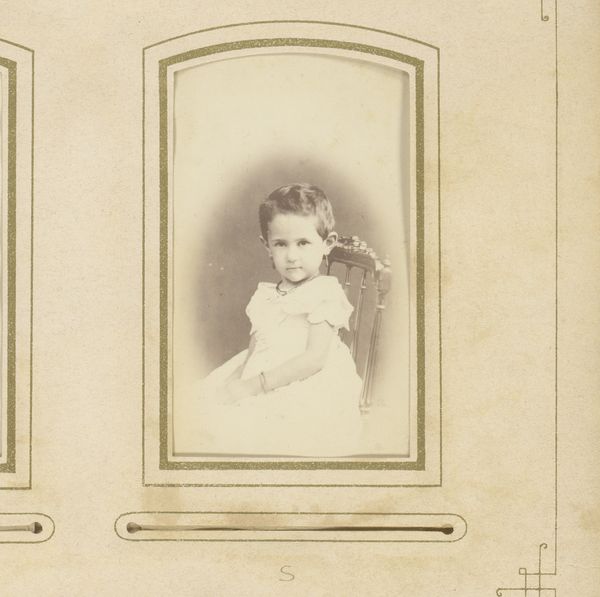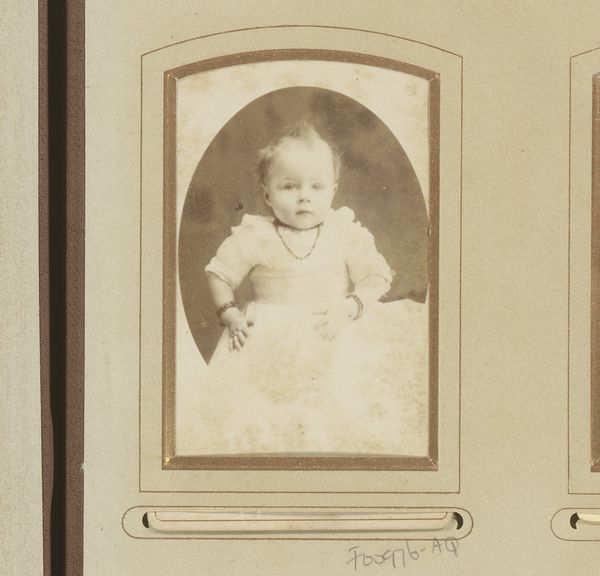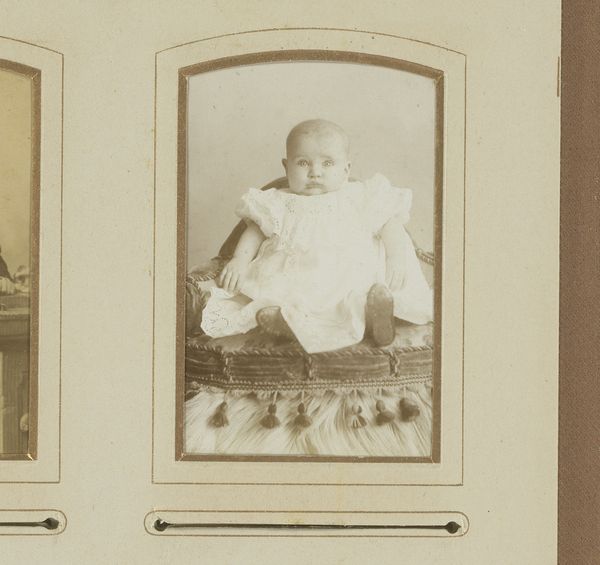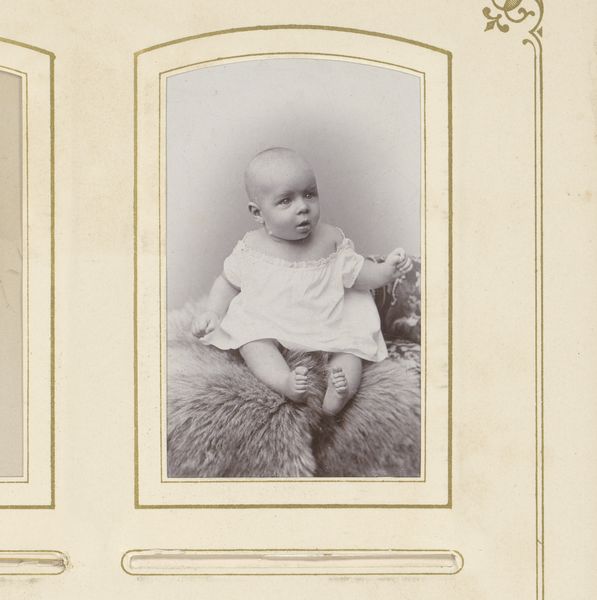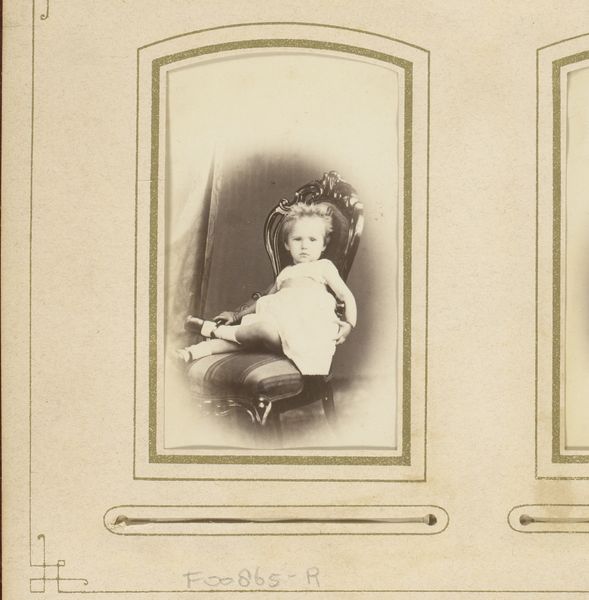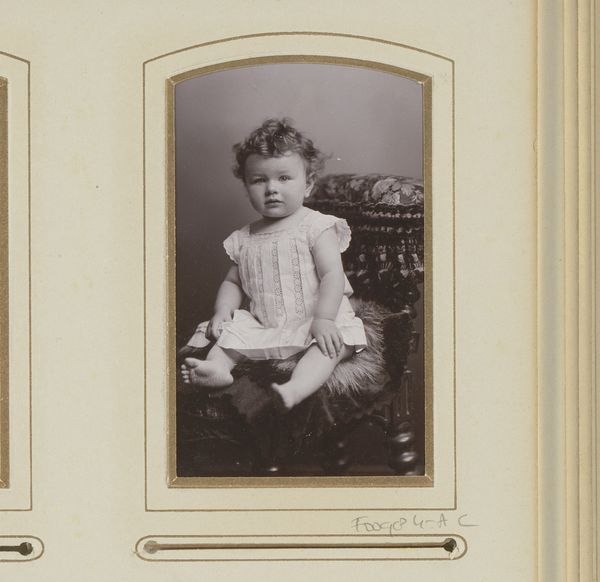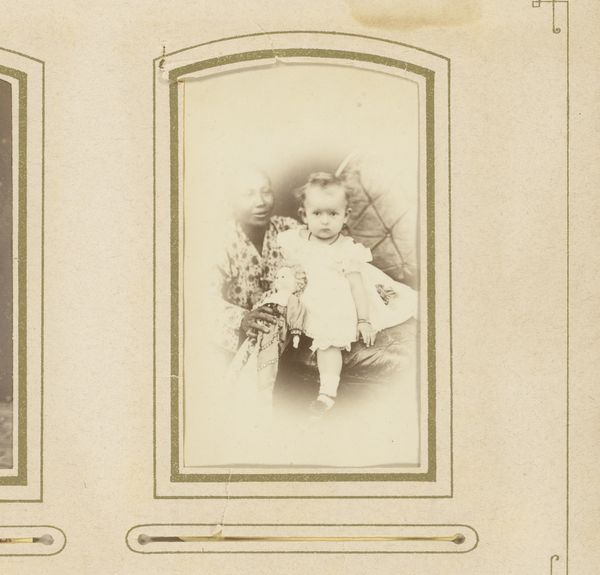
print, photography, albumen-print
#
portrait
#
aged paper
#
still-life-photography
#
toned paper
#
earth tone
#
parchment
# print
#
photography
#
brown and beige
#
warm toned
#
home decor
#
warm-toned
#
golden font
#
albumen-print
#
gold element
Dimensions: height 84 mm, width 51 mm
Copyright: Rijks Museum: Open Domain
Editor: Here we have a charming "Portret van een Meisje in Witte Jurk", or Portrait of a Girl in White Dress, dating from somewhere between 1880 and 1920, by B.J. Pottjewijd, done as an albumen print. I'm struck by how delicate and fragile it feels, almost like peering into someone's faded memory. What feelings does this photograph evoke in you? Curator: Oh, it absolutely sings to me of nostalgia, doesn't it? The warm tones, that golden frame… It whispers of a bygone era when even everyday moments were imbued with a certain ritual and importance. It feels deeply personal, wouldn't you agree? A fleeting moment captured and preserved with such care. And look at that light—soft, almost dreamlike. Does it make you wonder about the photographer's intent, perhaps capturing the essence of innocence? Editor: It does make me wonder. Perhaps the photographer knew the child? I notice the composition focuses entirely on the face. Curator: Indeed. There's a stillness about it, isn't there? The absence of a vibrant backdrop throws the entire focus onto her face. It’s less about photographic perfection and more about immortalizing a specific sentiment tied to a tiny face. Now I’m thinking, doesn't it invite questions of what *isn't* there as much as what *is*? Editor: That's a good point. Focusing on what we don’t see. So it’s more than just a sweet image. Curator: Exactly! It's a quiet conversation with time itself, leaving so much open for interpretation. Perhaps an attempt to bottle something elusive… innocence, perhaps. It urges us to project our own narratives onto the subject, blurring the boundaries between observer and observed. Editor: It’s so true. It’s no longer just a historical artifact, it becomes a mirror of our own perceptions. Thanks, I hadn’t thought of it that way before. Curator: My pleasure. I am off to reflect further on lost golden moments!
Comments
No comments
Be the first to comment and join the conversation on the ultimate creative platform.
